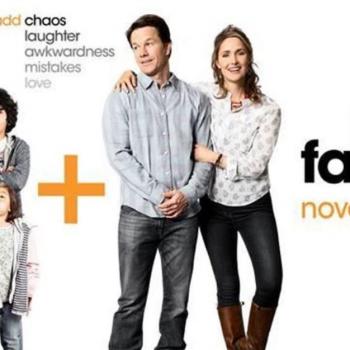This is a true story. So says a title card to begin the 1986 movie Fargo, as well as the 2015 film Kumiko, the Treasure Hunter (literally, Kumiko shows the actual opening footage of Fargo). Of course, this take on the standard slogan “based on a true story” is the cause of much amusement for the Coen brothers, makers of Fargo, and many who have watched the film, since apparently the movie was basically complete fiction.

Movies based on true stories tend to fall into one of two categories: tragedies of somewhat epic proportion or inspirational stories with happy endings. At this point, I would ask you to consider which you prefer: movies with happy endings or darker endings? And why is that? Does it say something about an individual’s worldview as to whether he or she likes happy or sad endings? Does it indicate a belief in God and an afterlife if you enjoy happy endings? And conversely, does it show a nihilistic worldview on the part of the viewer if you enjoy sad or tragic endings?
For my part, I believe that a person can enjoy both kinds of movies. It seems a false dichotomy to say that people can either like movies with happy or sad endings. Shakespeare wrote both comedies and tragedies, and both bring different sets of insights and pleasure to the reader (or viewer, if you happen to watch the many film adaptations). The Christian worldview, in particular, more or less demands we be open to both kinds of stories, with its belief in original sin and ultimate judgment for the wicked as well as its vision of redemption and eternal life in a new heavens and new earth.
Nevertheless, I am baffled by the number of people I know who cannot stand for a movie to have anything but a happy ending. Maybe it’s a symptom of being part of the privileged West, not believing or wanting to believe that life is tragic. Maybe it truly is, as I’ve been told, that people have enough sadness in real life; they need their entertainment to give them a respite from the sadness. Regardless, it seems happy endings do better than sad endings at the box office.
But, what about films that only fake happy endings? Films that seem to end happily, but on further reflection may have tried to have their cake and eat it too- with both a realistic, tragic ending and a happy ending at the same time? Can you think of any? Let’s return to Kumiko, the Treasure Hunter.
Kumiko is a bored office assistant in Japan who comes across a VHS tape of Fargo and becomes convinced that not only is there a briefcase full of money hidden in the snow somewhere in Minnesota (put there by Steve Buscemi’s character in Fargo), but that it is her destiny to go to America to find it. The setup echoes the 2007 British film Son of Rambow, in which a young boy in a fundamentalist home is inspired by the only movie he’s ever seen, a pirated VHS copy of Rambo: First Blood, but the tone of the two films is completely different.
At this point, I will be getting in to some spoilers, so if you don’t want me to ruin the ending for you, go watch Kumiko on DVD or On Demand. And then come back, because this is just getting good.
What’s important to know is that there was a real life Kumiko. Her name was Takako Konishi, and according to Wikipedia, an urban legend sprang up around her coming to America, that she died trying to find the Fargo treasure. In reality, however, it turns out that she had some kind of failed relationship and she ended up committing suicide (most likely not having ever looked for a suitcase of cash).
Nevertheless, the filmmakers, David and Nathan Zellner, ran with the urban legend. And what happens at the end of the film is a question of fact versus fiction, reality versus ‘based on a true story.’ (Again, spoiler alert) Kumiko ends up in the North Dakota wilderness, with no money, food, water, help, or real direction, searching for the briefcase. At the point of exhaustion, she falls down in the snow as night falls. When we come back to her in the morning, she is on her knees in a heap, covered with the night’s snowfall. In a wintery resurrection she rises, and with renewed determination (and perfect hair and makeup) finds the random fence with the briefcase full of money. Cue credits, happy ending.
But was it a happy ending? Or an imagined happy ending? Everything up to the last scene makes us think she is headed for disaster and will die in the snowy vastness. Indeed, the real ‘Kumiko’ did die in Minnesota. Maybe the kicker in my interpretation of this ending is the crane shot that starts from above Kumiko’s fallen body. It reminded me of a similar crane shot from the 1976 film Taxi Driver. After a lethal shootout between Travis Bickle (Robert DeNiro) and a local pimp and his crew, the camera soars above the fray in a dreamlike way before segueing to a happy ending with Travis making peace with Betsy, the woman he greatly offended earlier in the film.
There is much debate over whether the end of Taxi Driver is real or a dream sequence (for his part, screenwriter Paul Schrader has maintained that Travis survived the massacre and the ending was meant as straight narrative). I believe, from the movement of the camera and the disjunction between the ending sequence and the rest of the film, that the ending is a dream, a happy ending that follows the real, tragic ending. Another film where this happens is Django Unchained. The real ending to Django happens when he is caught and hung upside down; all that follows that is a dream sequence (note the change in tone from the rest of the film and the horse dance Django does). What happens is what we want to happen, the triumph of the slave over his oppressors. I believe Quentin Tarantino is having his cake and eating it too- with the tragic ending, he is being true to the actual experience of the vast majority of slaves, but with the dream sequence, he is able to give the audience what it wants and continue his string of revenge fantasies.
So, in the end, does it matter whether these films have ‘real endings’ or imagined endings? Are these directors cheating by giving the casual viewer a happy ending but giving the studious viewer a darker truth? Death is never pleasant and imagining life beyond death is a fundamentally human and spiritual exercise. If (or rather, since) God is real, but evil is real as well, life is simultaneously tragic and hopeful. A believer’s death is both an occasion for sadness and celebration. Who says you can’t have your cake and eat it too?













